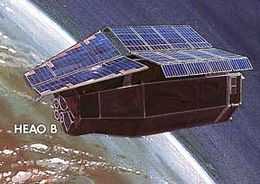Kosmos 974 | Intelsat IVA F-3 |
Soyuz 27 | Kosmos 975 | Kosmos 976
· Kosmos 977
· Kosmos 978
· Kosmos 979
· Kosmos 980
· Kosmos 981
· Kosmos 982
· Kosmos 983 | Kosmos 984 | Kosmos 985 |
Progress 1 | Molniya-3 No.20 | Kosmos 986 | Fanhui Shi Weixing 4 |
IUE | Kosmos 987 | Kyokko | Kosmos 988 | OPS 6291 | Kosmos 989 | Ume 2 | Kosmos 990 |
OPS 5111 | OPS 6031 | Kosmos 991 |
Soyuz 28 | Molniya-1-39 | Kosmos 992 |
Landsat 3 · OSCAR 8
· PIX-1 | Kosmos 993 | Kosmos 994 | OPS 0460
· OPS 7858 | Kosmos 995 |
OPS 9439 · OPS 9440 | Kosmos 996 | Kosmos 997
· Kosmos 998 | Kosmos 999 | Kosmos 1000 | Intelsat IVA F-6 |
Kosmos 1001 | Kosmos 1002 | OPS 8790 | Yuri 1 | Kosmos 1003 |
HCMM | OPS 6183 | Kosmos 1004 | OTS-2 | Kosmos 1005 | Kosmos 1006 |
OPS 5112 | Kosmos 1007 | Kosmos 1008 | Kosmos 1009 |
Pioneer Venus Orbiter | Kosmos 1010 | Kosmos 1011 | Kosmos 1012 |
Ekran No.13L | Molniya-1-40 | Kosmos 1013
· Kosmos 1014
· Kosmos 1015
· Kosmos 1016
· Kosmos 1017
· Kosmos 1018
· Kosmos 1019
· Kosmos 1020 | Kosmos 1021 | OPS 9454 | Kosmos 1022 | OPS 4515 |
Soyuz 29 |
GOES 3 | Kosmos 1023 |
Seasat |
Soyuz 30 |
Kosmos 1024 | Kosmos 1025 | Comstar 1C | Kosmos 1026 |
Progress 2 | GEOS-2 | Molniya-1-41 | Gran' No.14L | Kosmos 1027 | OPS 7310 | Kosmos 1028 |
Progress 3 |
Pioneer Venus Multiprobe |
ISEE-3 |
Ekran No.15L | Molniya-1-41 |
Soyuz 31 | Kosmos 1029 |
Kosmos 1030 |
Venera 11 | Kosmos 1031 |
Venera 12 | Jikiken | Kosmos 1032 | Kosmos 1033 | Progress 4 | Kosmos 1034
· Kosmos 1035
· Kosmos 1036
· Kosmos 1037
· Kosmos 1038
· Kosmos 1039
· Kosmos 1040
· Kosmos 1041 | Kosmos 1042 |
OPS 5113 | Kosmos 1043 | Molniya-3 No.22 |
TIROS-N | Kosmos 1044 |
Ekran No.14L | Nimbus 7
· CAMEO | Interkosmos 18
· Magion 1 | Kosmos 1045
· RS-1
· RS-2 | Prognoz 7 | Kosmos 1046 |
Einstein | Kosmos 1047 | Kosmos 1048 | NATO 3C | Kosmos 1049 | Kosmos 1050 | Kosmos 1051
· Kosmos 1052
· Kosmos 1053
· Kosmos 1054
· Kosmos 1055
· Kosmos 1056
· Kosmos 1057
· Kosmos 1058 | Kosmos 1059 | Kosmos 1060 |
OPS 5114 | OPS 9441
· OPS 9442 | Kosmos 1061 | Kosmos 1062 | Anik B1
· DRIMS | Kosmos 1063 | Gorizont No.11L | Kosmos 1064 | Kosmos 1065 | Kosmos 1066 | Kosmos 1067 | Kosmos 1068 | Kosmos 1069
